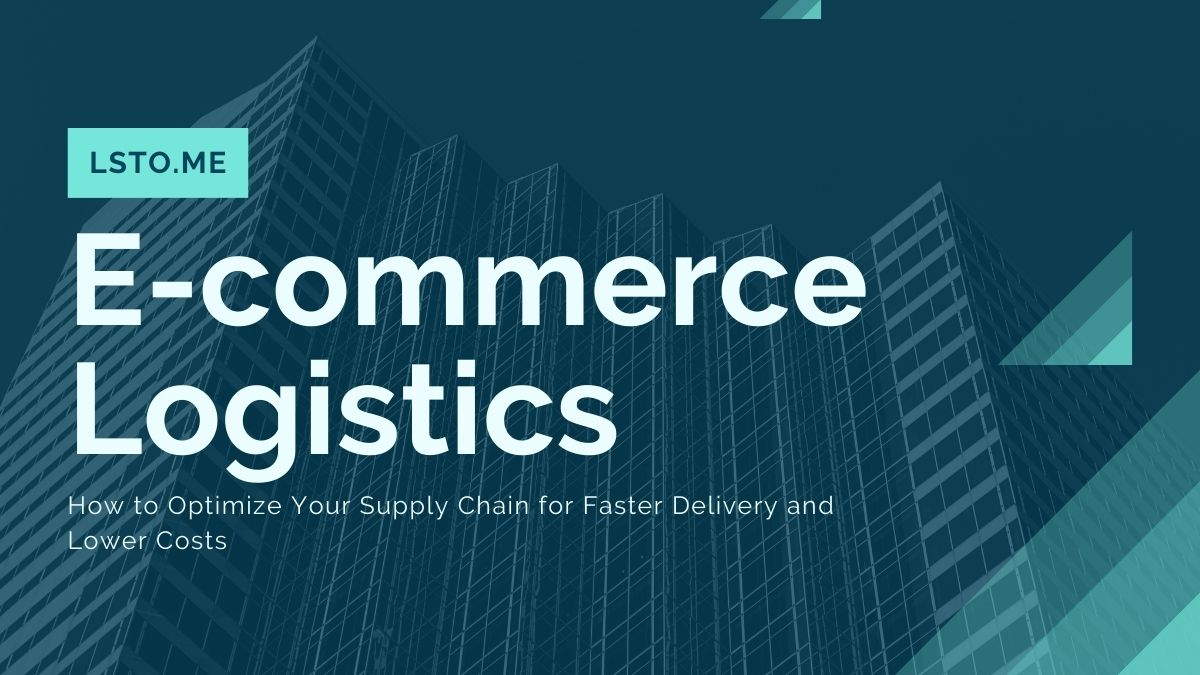
E-commerce logistics can be a complex and costly process, especially for small businesses. However, with the right strategies, it’s possible to optimize your supply chain to reduce costs and improve delivery times. In this article, we’ll explore some key tips and best practices for optimizing your e-commerce logistics.
Step 1: Evaluate your current logistics process
E-commerce logistics is a complex and vital process that involves the movement of goods from the point of origin to the end consumer. In today’s fast-paced e-commerce environment, businesses need to optimize their supply chain and logistics processes to meet customer expectations. The first step in achieving this goal is to evaluate your current logistics process.
To begin evaluating your e-commerce logistics process, you need to identify areas where improvements can be made. Start by analyzing your shipping and delivery times, order fulfillment rates, inventory management practices, and transportation costs. Look for any bottlenecks or inefficiencies in these areas that could be slowing down your supply chain.
Next, review customer feedback regarding their experience with your shipping and delivery process. Use this information to identify pain points that customers are experiencing and develop solutions to address them.
Step 2: Streamline your order processing
In today’s fast-paced world, it is crucial for e-commerce businesses to optimize their supply chain and streamline their order processing to remain competitive. One effective way of achieving this is through the use of automation technologies. By automating certain tasks such as order confirmation emails and s, businesses can save time and improve efficiency while also enhancing customer satisfaction.
Automated order confirmation emails are a great example of how e-commerce logistic processes can benefit from automation. With this feature, customers receive an automated email confirming their purchase and providing them with relevant details such as shipping information and estimated delivery times. This not only saves time for the business but also helps build trust with customers by keeping them informed about their orders.
In addition to automated emails, other areas of order processing that can be streamlined include inventory management, shipping label generation, and tracking updates.
Step 3: Improve your inventory management
Accurate inventory management is a crucial aspect of any E-commerce logistic operation. It involves tracking and managing the flow of goods, from the point of order to delivery. By optimizing your supply chain through effective inventory management, you can reduce costs and improve delivery times.
One way to achieve this optimization is by using software solutions that automate inventory management tasks. These solutions help track products in real time and provide insights into stock levels, ensuring that you always have enough products to fulfill customer orders. With greater visibility into your supply chain, you can make informed decisions about when and how much stock to reorder.
Another benefit of using software solutions for inventory management is that they help reduce human error. Manual data entry increases the risk of mistakes in product counts or incorrect orders being fulfilled, leading to customer dissatisfaction or lost sales due to stockouts.
Step 4: Optimize your shipping strategy
For an e-commerce business, optimizing the shipping strategy is crucial to reduce costs and improving overall customer satisfaction. Shipping expenses can be a significant expense for online retailers, but there are several ways to streamline the process and save money. One of the most effective ways is by negotiating with logistics providers for better rates.
To start, it’s essential to evaluate your current shipping strategy and identify any areas that need improvement. Look at factors such as delivery times, package sizes, and destinations to determine where you can make changes. Once you have a clear picture of your shipping needs, start researching different logistics providers to find one that suits your business best.
When negotiating with logistics providers, it’s important to be prepared with data on your shipping volume and preferences. Be clear about what you’re looking for in terms of pricing and services offered.
Step 5: Use data analytics to improve logistics performance
E-commerce logistics is a fast-paced industry that requires continuous improvement to stay competitive. One of the most effective ways to optimize the supply chain and improve logistics performance is by using data analytics. With data analytics, businesses can gain insights into their logistics processes and identify areas for improvement.
By analyzing the data collected from various sources such as transport management systems, warehouse management systems, and customer feedback, businesses can get a better understanding of their overall logistics performance. This information can be used to make informed decisions that will help them optimize their supply chain and streamline their operations. For example, if data analysis reveals that there are bottlenecks in the transportation process, businesses can take steps to improve routing or choose more efficient carriers.
Data analytics also helps e-commerce logistic companies proactively manage inventory levels and avoid stockouts or overstocks.
Conclusion:
Optimizing your e-commerce logistics is crucial to reducing costs, improving delivery times, and providing a better customer experience. By following the steps outlined in this article, you’ll be able to streamline your logistics process, reduce costs, and achieve greater efficiency in your e-commerce operations.